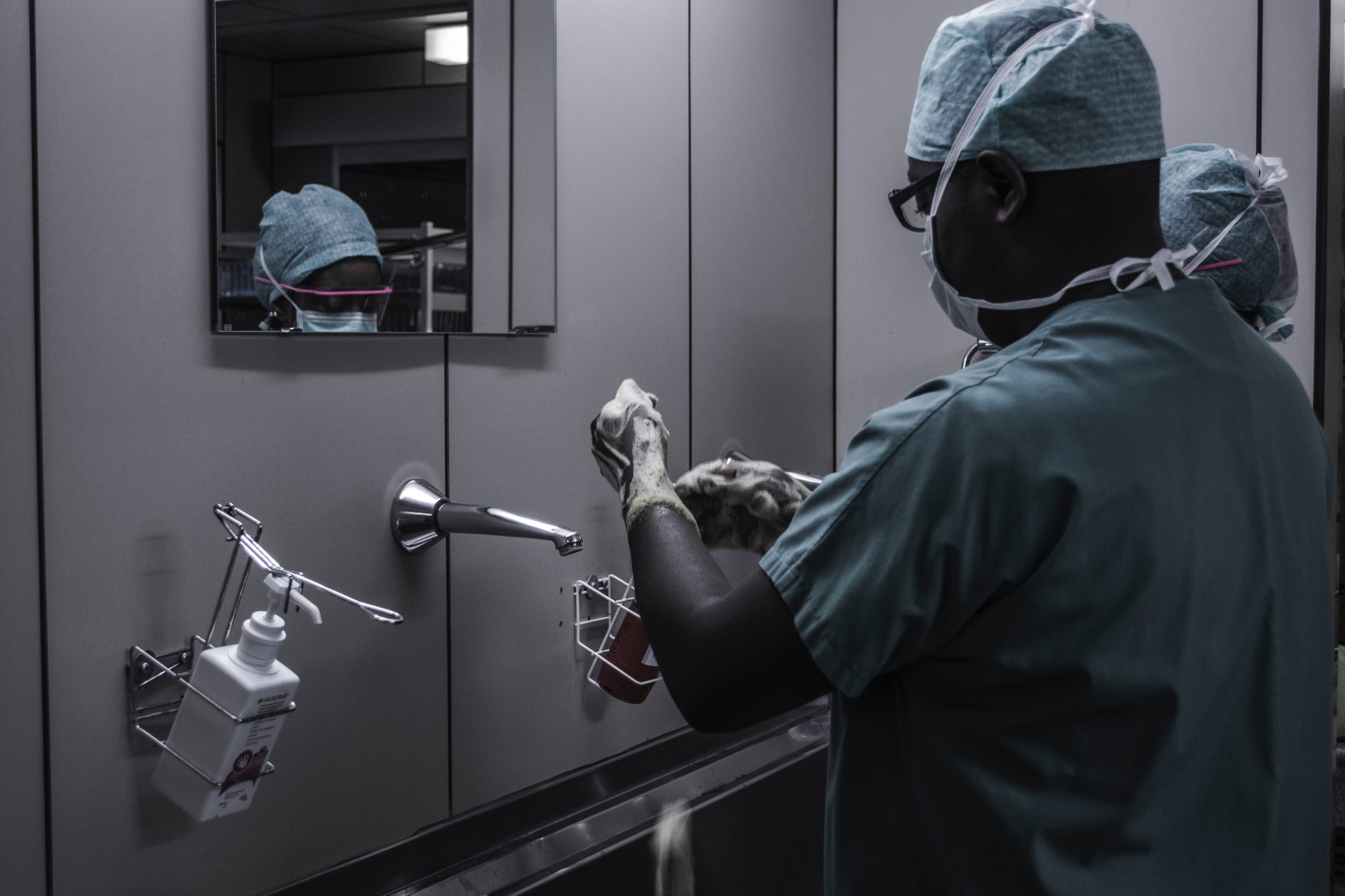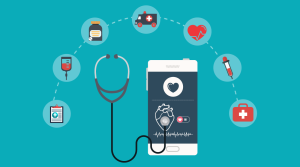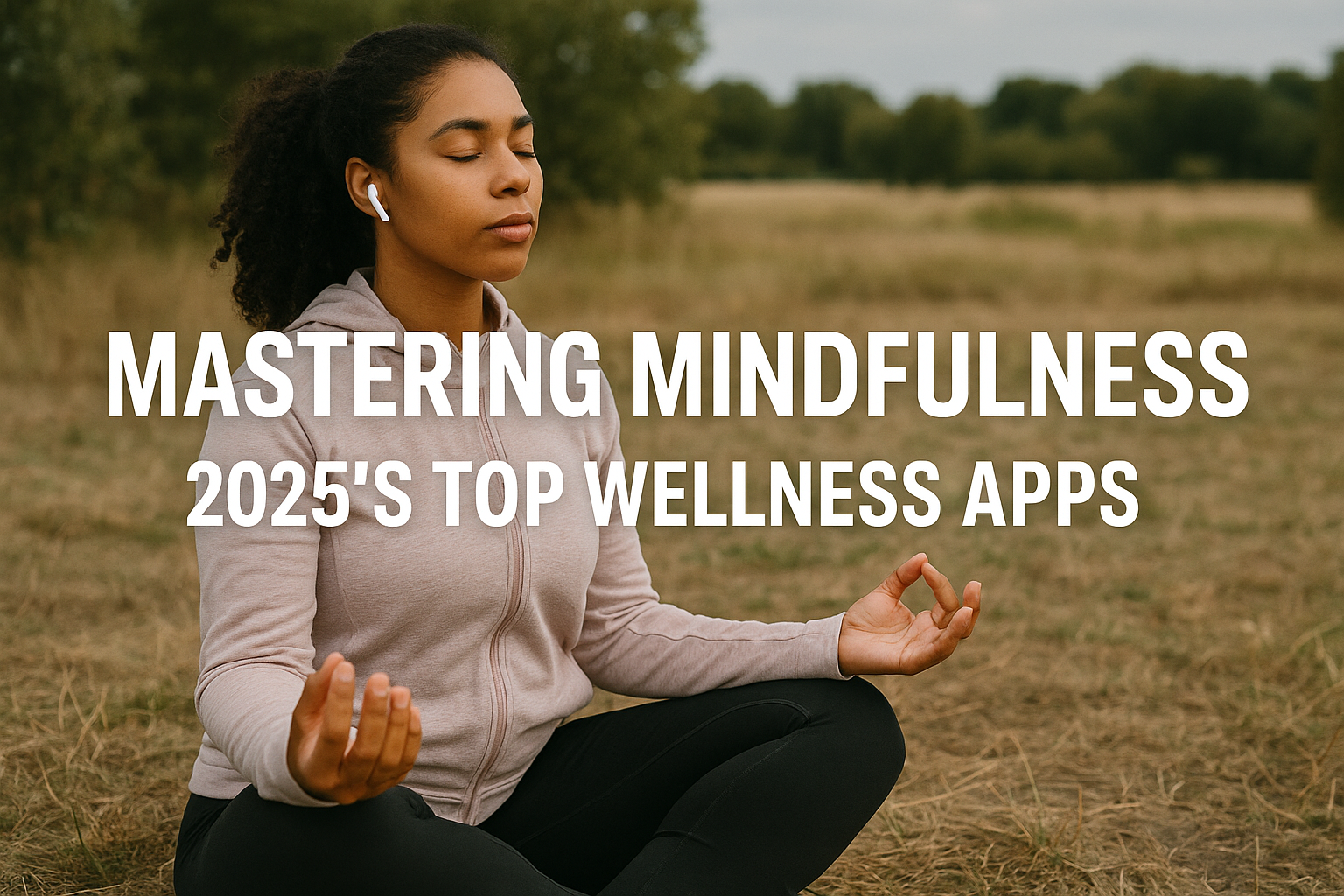health
The 5 Reasons Americans Are Putting Off Medical Care

The 5 Reasons Americans Are Putting Off Medical Care
According to a survey by the Kaiser Family Foundation, about one-third of adults in the United States had put off or skipped medical care in 2018 due to its high cost. This statistic is even higher for lower-income individuals and those without health insurance. With an aging population and rising costs, this issue is only growing more prominent. In this blog post, we’ll explore why Americans are putting off medical care and what can be done to address it. From financial concerns to high deductibles and lack of insurance, we’ll dive into all five reasons people are skipping out on necessary medical treatments.
The Cost of Medical Care
It’s no secret that the cost of medical care in the United States is skyrocketing. In fact, according to a recent study, the average American family now spends more on health care than they do on food. This is a startling statistic, and it’s one that is causing many Americans to put off needed medical care.
There are a number of reasons why medical care is so expensive in the United States. One of the biggest reasons is the high cost of prescription drugs. Prescription drugs make up a large portion of most Americans’ medical bills, and drug prices have been rising steadily for years. Another reason for the high cost of medical care is the fee-for-service model that many doctors and hospitals still use. This model means that doctors and hospitals are paid for each individual service they provide, regardless of whether or not it improves the patient’s health. This creates an incentive for providers to offer more tests and procedures, even when they may not be necessary.
The high cost of medical care is a major problem in the United States, and it’s one that is causing many people to put off needed care. If you’re struggling to afford your medical bills, there are a few things you can do to ease the financial burden. You may be able to negotiate with your doctor or hospital to lower your bill, or you can look into getting help from state or federal assistance programs. Whatever you do, don’t let the cost of medical care keep you from getting
The Lack of Insurance
The lack of insurance is one of the main reasons why Americans are putting off medical care. According to a recent study, nearly 30% of respondents said that they delayed getting medical care because they could not afford it. This is a significant increase from the 23% who said the same in 2010.
One of the biggest problems with the lack of insurance is that it often means that people cannot get the preventive care they need. This can lead to serious health problems down the road, as well as increased costs for both the individual and the healthcare system as a whole.
There are a number of reasons why so many Americans lack health insurance. The cost of coverage has been rising steadily for years, and employer-sponsored plans have become increasingly rare. In addition, many people simply cannot afford to pay for coverage on their own.
The Affordable Care Act was designed to help address this problem, but its effects have been limited so far. In particular, the law’s individual mandate has been unpopular and has had little impact on coverage rates. As a result, millions of Americans remain uninsured and at risk of financial ruin if they experience a major health event.
The Fear of the Unknown
1. The Fear of the Unknown:
It’s no secret that many Americans are afraid of going to the doctor. In fact, a recent study found that nearly 1 in 3 adults in the U.S. say they have avoided seeing a doctor due to fear or anxiety.
There are a number of reasons why people may be afraid of seeking medical care, but one of the most common is the fear of the unknown. When you don’t know what to expect, it can be scary to go through with medical procedures or even just to schedule an appointment.
If you’re afraid of the unknown when it comes to your health, it’s important to remember that you’re not alone. Talk to your friends and family about their experiences with doctors and healthcare, and look for resources that can help you understand what to expect. With a little knowledge, you can take control of your health and feel more confident about seeking medical care.
The Inconvenience of Scheduling Appointments
The average American has a lot on their plate. Between work, family, and social obligations, it can be hard to find time to schedule appointments for routine medical care. And when you do have time for an appointment, it can be difficult to get in to see your doctor when you need to.
According to a recent survey, nearly 60% of Americans have put off medical care because it was too inconvenient to schedule an appointment.1 This is especially true for routine care like dental appointments and physicals.
One of the biggest reasons people put off medical care is because they can’t get in to see their doctor when they need to. According to the same survey, nearly 40% of Americans have had trouble getting an appointment with their doctor within the last year.2
This is especially true for primary care doctors. A recent study found that the average wait time to see a primary care doctor was 24 days.3 That’s almost a month! And if you need to see a specialist, the wait time can be even longer.4
Another reason people put off medical care is because of the cost. Even with health insurance, medical bills can be expensive. According to a recent survey, nearly 30% of Americans have put off medical care because of the cost.5
If you’re putting off medical care because of the inconvenience or cost, you’re not alone. But there are ways to make it easier to get
The Difficulty of Finding a Doctor
It’s no secret that the cost of healthcare in the United States is skyrocketing. In fact, according to a recent study, the average American family now spends more on healthcare than they do on food. With costs rising and wages stagnant, it’s no wonder that so many people are putting off medical care.
But the cost of healthcare isn’t the only reason that Americans are avoiding doctors. According to a new poll from The Associated Press-NORC Center for Public Affairs Research, nearly 1 in 5 adults say they have put off medical care because they couldn’t find a doctor who was accepting new patients.
This problem is especially prevalent among low-income Americans and those who live in rural areas. In fact, nearly 1 in 3 low-income adults say they have put off medical care because they couldn’t find a doctor who was accepting new patients. And while nearly 9 in 10 urbanites say they have easy access to a doctor, just over half of rural residents say the same.
The difficulty of finding a doctor is just one of the many reasons that Americans are putting off medical care. With costs rising and access dwindling, it’s no wonder so many people are going without the care they need.
Conclusion
As healthcare costs have risen over the past decade, many Americans are finding themselves putting off necessary medical care due to financial strain. We’ve discussed five of the most common reasons why people may be avoiding or delaying their medical appointments, including a lack of insurance coverage, expensive copays and deductibles, long wait times for appointments, inconvenience related to transportation and scheduling issues, and general mistrust in doctors. It’s important for individuals struggling with these issues to know that there are options available that can help them access the care they need without breaking the bank.
health
Anavar Timing and Dosage for Optimal Muscle Growth

Anavar (Oxandrolone) remains a top choice among bodybuilders seeking lean gains without excessive water retention or harsh side effects. Unlike many anabolic steroids, Anavar is known for its mild nature, especially in low to moderate doses, making it a favorite for both beginners and experienced users. In this guide, we’ll break down everything you need to know about Anavar timing and dosage for optimal muscle growth, while focusing on how to incorporate Anavar for bodybuilding in the most effective way.
What Is Anavar?
Anavar is the brand name for Oxandrolone, a synthetic anabolic steroid first developed in 1962. Originally prescribed for medical conditions such as muscle wasting, osteoporosis, and recovery from surgery, Anavar gained traction in the fitness and bodybuilding communities for its ability to promote lean muscle growth, strength, and fat loss with fewer androgenic effects.
Anavar’s unique chemical structure makes it resistant to liver metabolism, so it retains potency when taken orally. This makes it one of the few steroids that does not require injection, further boosting its popularity.
Why Bodybuilders Choose Anavar
Before diving into specific dosages and timing, it’s crucial to understand why Anavar for Bodybuilding is so widely used:
-
Lean Muscle Gains: Anavar promotes muscle hypertrophy without causing significant water retention. This is ideal for cutting phases or for athletes who want a dry, vascular look.
-
Fat Reduction: Anavar has been shown to promote lipolysis, making it easier to burn fat while maintaining muscle mass.
-
Strength Without Bulk: Athletes gain strength without putting on excessive size, which is especially beneficial in sports with weight classes.
-
Mild Side Effects: Anavar is known for its relatively mild effect on testosterone suppression and lower risk of gynecomastia or severe acne compared to other steroids.
-
Fast Results: Many users report visible results within 2–3 weeks.
Best Anavar Dosage for Muscle Growth
For Men:
-
Beginner Dosage: 20–30 mg per day
-
Intermediate Dosage: 40–60 mg per day
-
Advanced Dosage: 60–80 mg per day (not typically recommended for prolonged periods)
For Women:
-
Beginner Dosage: 5–10 mg per day
-
Intermediate Dosage: 10–15 mg per day
-
Advanced Dosage: Up to 20 mg per day (with caution)
Important Note: Higher doses don’t always translate to better results. The body can only utilize a certain amount of hormone efficiently, and higher doses increase the risk of side effects, especially for the liver and cholesterol levels.
Anavar Cycle Duration
-
Typical Cycle Length: 6–8 weeks
-
Maximum Cycle Duration: 10 weeks (for experienced users only)
-
Off-Cycle Period: Equal to or longer than the cycle (to allow liver recovery and natural testosterone production to resume)
Anavar is often stacked with other compounds such as Testosterone, Winstrol, or Primobolan for enhanced results. However, stacking requires careful planning and should only be considered by advanced users.
Best Timing to Take Anavar for Muscle Growth
Anavar has a relatively short half-life of 8–10 hours, which means it should be taken in split doses throughout the day for stable blood levels. Here’s how to time it for optimal results:
Timing Strategy 1: Twice Daily Dosing
-
Morning Dose: Half of your daily dose (e.g., 20 mg if taking 40 mg total)
-
Evening Dose: The remaining half (e.g., another 20 mg)
Timing Strategy 2: Pre-Workout Focus
Some athletes prefer to take a larger portion of their dose 1–2 hours before training to leverage the performance-enhancing effects.
Example:
-
Morning: 10 mg
-
Pre-Workout (1 hour before training): 30 mg
This method may boost strength, energy, and endurance during workouts, especially when combined with a proper pre-workout nutrition plan.
Expected Results: What to Look For
With proper dosage and timing, most users can expect the following within an 8-week cycle:
-
2–6 kg of lean muscle gain
-
Noticeable reduction in body fat
-
Improved vascularity and definition
-
Better endurance and recovery
-
Minimal water retention
-
Sustained strength gains
However, results may vary depending on your diet, training intensity, genetics, and experience with anabolic agents.
Anavar for Bodybuilding Cutting vs Bulking
While Anavar is often labeled a “cutting steroid,” it can be used in bulking cycles when paired with high-calorie, high-protein diets.
Anavar in Cutting Cycles:
-
Promotes fat loss while preserving muscle
-
Increases vascularity
-
Ideal for contest prep or beach-ready physiques
Anavar in Lean Bulking Cycles:
-
Helps add quality muscle without bloating
-
Reduces fat gain even in a caloric surplus
-
Best when stacked with testosterone for more pronounced gains
Post-Cycle Therapy (PCT)
Even though Anavar is milder than other steroids, post-cycle therapy is still essential, especially for men. Anavar can suppress natural testosterone production, and a proper PCT helps to:
-
Restore hormonal balance
-
Preserve muscle gains
-
Prevent fatigue, mood issues, and libido loss
Recommended PCT:
-
Clomid: 25–50 mg/day for 3–4 weeks
-
Nolvadex: 20–40 mg/day for 3–4 weeks
-
Begin PCT 1–2 days after your last Anavar dose
Women generally do not require a PCT if using Anavar solo at low doses, but they should monitor for signs of virilization (deepening voice, clitoral enlargement, etc.).
Side Effects to Watch For
Though Anavar is well-tolerated, it’s not free from potential side effects:
Common Side Effects:
-
Headaches
-
Nausea
-
Oily skin
-
Temporary acne
-
Sleep disturbances
Serious Risks (at high doses or prolonged use):
-
Liver strain (hepatotoxicity)
-
Cholesterol imbalance (lowered HDL)
-
Testosterone suppression (in men)
-
Virilization symptoms (in women)
To reduce liver strain, consider adding a liver support supplement (e.g., milk thistle or TUDCA) during your cycle.
Diet and Training Tips While on Anavar
To get the most out of your Anavar cycle, your diet and training need to be dialed in:
Nutrition:
-
Protein Intake: 1.5–2 grams per kg of body weight
-
Carbs: Focus on complex sources like oats, sweet potatoes, and rice
-
Fats: Include healthy fats (avocados, nuts, omega-3s) for hormonal support
Training:
-
Focus on progressive overload (increasing weights, reps, or intensity)
-
Incorporate compound lifts (squats, deadlifts, presses)
-
Include cardio 3–4x weekly to support fat loss and cardiovascular health
Conclusion:
Absolutely—when used correctly, Anavar for bodybuilding delivers impressive muscle growth, strength increases, and fat loss, with a relatively low risk of harsh side effects. By timing your doses properly and sticking to a smart dosage, you can maximize your results while minimizing health risks.
Remember, Anavar is not a shortcut. It works best when paired with disciplined training, a clean diet, and a commitment to recovery. And as with any performance-enhancing drug, it’s important to consult a medical professional before starting a cycle.
health
Top Health and Wellness Tips for 2025

Introduction
Health and wellness are becoming more important than ever in 2025. With busy lives and constant changes, it’s easy to feel tired and stressed. That’s why following the right health and wellness tips 2025 can make a huge difference.
Living a healthy life today is not just about eating vegetables or going for a run. It’s about balancing your mind, body, and soul. Let’s explore the best ways you can stay strong, happy, and healthy this year.
What Is a Healthy Lifestyle in 2025?
A healthy lifestyle means making good choices every day. In 2025, this includes following new wellness trends, choosing clean foods, moving your body often, and caring for your mental health.
Healthy lifestyle habits are easier to follow when you start small. Simple steps like drinking more water, sleeping well, and staying active can lead to big results over time.
Why Health and Wellness Matter More in 2025
With the fast-paced world we live in, stress, anxiety, and health problems have become more common. That’s why focusing on mental health practices, better eating, and fitness routines 2025 is not just important, it’s necessary.
People now realize that health is not only about looking good. It’s about feeling good inside and out. Being healthy helps you work better, enjoy life more, and stay ready for whatever comes your way.
Top Health and Wellness Tips for 2025

Image by: Yandex.com
Let’s dive into the key tips you can follow to build a better life in 2025.
1. Stay Active with Smart Fitness Routines
Exercise remains the heart of good health. But in 2025, it’s not about long boring workouts. It’s about fitness routines 2025 that fit into your daily life.
Short 20-minute workouts, virtual fitness classes, and outdoor activities are popular. Focus on doing activities you love, whether it’s dancing, cycling, swimming, or even walking your dog.
Tip: Mix strength training, cardio, and flexibility exercises during the week for best results.
2. Practice Mindful Eating Every Day

Image by: Yandex.com
Mindful eating means paying attention to what you eat and how you feel while eating. In 2025, mindful eating tips help people enjoy their food more and avoid overeating.
Eat slowly, listen to your body’s hunger signs, and choose clean, natural foods. Stay away from processed junk and pick fresh fruits, vegetables, and whole grains whenever possible.
Tip: Try to have phone-free meals to enjoy your food better.
3. Prioritize Mental Health Daily
Good health starts with a peaceful mind. Practicing mental health practices like deep breathing, meditation, and journaling can lower stress levels and lift your mood.
Even spending five minutes daily focusing on your breathing can make a big difference. Mental health is just as important as physical health in 2025.
Tip: Add “mental breaks” to your schedule where you relax, unplug, and reset.
4. Build a Simple Self-Care Routine
Daily self-care tips remind us to treat ourselves kindly. It could be a short walk in the park, reading a book, or taking a warm bath after a long day.
In 2025, self-care is seen as essential, not selfish. Taking small moments for yourself builds emotional strength and reduces burnout.
Tip: Choose three small self-care activities to do every week.
5. Choose Sustainable Health Habits
Sustainable health choices are a growing trend in 2025. This means making choices that are good for your health and good for the planet too.
Eating local foods, using eco-friendly products, and reducing waste are easy ways to support your wellness journey and help the environment.
Tip: Bring reusable water bottles and bags with you to make small changes that add up.
Table: Top Wellness Focus Areas in 2025
| Focus Area | Example Practices | Benefit |
|---|---|---|
| Fitness | Short, flexible fitness routines | Boosts energy and strength |
| Nutrition | Mindful eating with clean foods | Better digestion and weight control |
| Mental Health | Meditation, breathing exercises | Reduces stress, improves focus |
| Self-Care | Relaxation activities, digital detox | Builds emotional resilience |
| Sustainability | Eco-friendly health choices | Helps personal and planet’s health |
Bonus Tips to Stay Healthy and Happy

Image by: Yandex.com
- Drink More Water: Aim for at least 8 glasses a day.
- Sleep Well: Try to get 7–9 hours of sleep every night.
- Limit Screen Time: Too much screen time can harm your eyes and sleep.
- Stay Social: Talk to friends and family regularly.
- Stay Positive: Positive thinking improves health and energy.
Challenges in Following Health and Wellness Tips
While it sounds easy, sticking to health and wellness tips 2025 can be tricky. Busy schedules, digital distractions, and unhealthy food options everywhere can pull you off track.
But remember, it’s okay to have off days. The key is not giving up. Keep going, even if it’s just one small step at a time.
Future Trends: What’s Coming Next in Wellness?

Image by: Yandex.com
Looking ahead, health and wellness will get even more personal. Smart wearable devices will track our habits better. AI-based fitness coaches will suggest workouts made just for you. Virtual reality will offer relaxing escapes for mental wellness.
Also, people will care even more about sustainable health choices, protecting not just their bodies but also the world around them.
Conclusion
Staying healthy in 2025 is not about hard diets or long hours at the gym. It’s about simple, steady changes like following healthy lifestyle habits, practicing mindful eating tips, trying new fitness routines 2025, and caring for your mind and body.
By focusing on smart and easy wellness steps, you can build a stronger, happier, and healthier life this year and beyond.
Call-to-Action (CTA):
Ready to feel your best in 2025? Start today by picking one health tip from this list and making it part of your daily life. Your future self will thank you!
health
Mastering Mindfulness: 2025’s Top Wellness Apps

Introduction
Learning to be mindful means paying full attention to what you feel and think right now. In 2025, mindfulness apps make this simple. They guide you through deep breathing, short meditations, and stress-busting exercises. You can use them anywhere—at home, work, or on the go. The best top wellness apps of 2025 combine easy tools with clear instructions to help you focus, relax, and sleep better. Whether you want to reduce anxiety or build a daily habit of calm, these apps bring mindfulness to your pocket.
What Is a Mindfulness App?
A mindfulness app is a program you install on your phone or tablet. It uses audio guides, timers, and reminders. When you sit quietly and follow its steps, you learn to notice thoughts without judgment. Over time, this practice lowers stress and boosts mood. Many apps also track your progress, showing how many days you’ve meditated and how you’ve slept. This feedback helps you build a lasting habit. In short, mindfulness apps turn ancient techniques into easy daily routines.
Why Use Wellness Apps in 2025?
By 2025, our lives are busier than ever. We juggle work, school, family, and social media alarms. Daily mindfulness helps us step back from the rush, even for a few minutes. Wellness apps bring guided meditations, breathing breaks, and sleep stories to our fingertips. They let us pause and reset. Research shows regular mindfulness lowers blood pressure and improves focus. It also boosts emotional well-being. With the best mental health apps, you can manage stress and anxiety without a therapist in the room.
Top Wellness Apps for Mindfulness in 2025

Image by: Yandex.com
Here are five standout apps you’ll want to try this year:
1. Calm+
Calm+ offers guided meditation sessions from one to 30 minutes. It has sleep stories read by soothing voices and daily calm reminders. The app also features breathing exercises and relaxing nature sounds.
2. Headspace Pro
Headspace Pro focuses on simple, fun lessons. It breaks mindfulness into mini-courses on stress, focus, and sleep. It also offers timed SOS meditations for sudden anxiety.
3. Insight Timer
Insight Timer is free and packed with content. You get thousands of guided meditations from teachers around the world. The app also has a large timer section if you prefer silent practice.
4. BreatheWell
BreatheWell specializes in breathing exercises for stress. It uses your phone’s camera or a wearable to track your breath. The app adapts exercise length and pace based on your needs.
5. MySleepPal
MySleepPal focuses on bedtime routines. It offers guided sleep meditations, white noise generators, and gentle wake-up alarms. It also tracks sleep cycles and gives tips for better rest.
2025’s Leading Mindfulness Apps
| App Name | Key Strength | Unique Feature | Best For |
|---|---|---|---|
| CalmSpace 3.0 | Sleep stories | AI voice picks tone to match mood | Night owls |
| Headspace Horizon | Quick focus packs | 3-minute “work sprints” | Students & workers |
| Balance Pro | Adaptive plans | Daily check-in tailors lessons | New meditators |
| Insight Timer Plus | Huge free library | 160 k tracks from teachers | Budget users |
| Aura Harmony | Mood tracking | Quick breath test sets plan | Mental-health tracking |
| Ten Percent Path | Science sets | Expert talks on habit change | Skeptics & data fans |
What Features Matter Most?

Image by: Yandex.com
When you pick a guided meditation app or stress management app, look for these features:
Easy Interface
Choose an app with clear buttons and short menus. A simple design helps you start a session in seconds.
Variety of Sessions
Apps with many lesson lengths—like one minute to half an hour—fit any schedule.
Progress Tracking
Charts and streaks motivate you to keep going. This feedback guides your daily mindfulness habit.
Offline Access
An app that lets you download sessions helps when Wi-Fi is slow or off.
Custom Reminders
Set gentle prompts to take a break, breathe, or meditate. This keeps mindfulness in your day.
How to Choose the Right Mindfulness App for You

Image by: Yandex.com
Choosing the right app depends on what you need. Think about what you want from your mindfulness practice. Are you looking to manage stress, sleep better, or improve focus?
If you want help falling asleep, an app with bedtime stories or relaxing sounds like Calm is a good choice. If you want deep meditation, Insight Timer’s wide range of teachers and styles might suit you.
Time is also a factor. If you’re very busy, apps like Simple Habit that offer quick sessions could fit your schedule.
Also, think about cost. Some apps offer free content, while others need a subscription. Many apps let you try them free for a few days. Use this trial to see if you like the style and voice of the meditations.
The right app should feel comfortable and easy for you to use. It should motivate you to make mindfulness a daily habit.
Tips to Make the Most of Your App

Image by: Yandex.com
Use these tips to build a lasting habit:
Start Small
Begin with just two minutes a day. Gradually rise to ten or fifteen.
Pick a Time
Meditate at the same hour each day. Morning or before bed works well.
Find a Quiet Spot
Even a small corner with a chair or cushion helps you relax without noise.
Follow the Voice
Pay attention to the guide’s words and breathing tips. Let your mind focus on the instruction.
Keep It Up
Miss one day? No worry. Start again tomorrow and aim for a small weekly streak.
Conclusion
Mastering mindfulness in 2025 is easier with the right wellness apps. Calm+, Headspace Pro, Insight Timer, BreatheWell, and MySleepPal offer clear, guided tools for stress relief, better sleep, and daily calm. By choosing simple apps with key features—easy interface, session variety, and progress tracking—you build healthy habits that fit your life. Use our tips to start small, set routines, and stick with it. Embrace mindfulness today, and watch your well-being grow.
Call-to-Action (CTA): Ready to find calm? Download a top mindfulness app now and begin your journey to daily peace!
-

 Business2 years ago
Business2 years agoCybersecurity Consulting Company SequelNet Provides Critical IT Support Services to Medical Billing Firm, Medical Optimum
-

 Business2 years ago
Business2 years agoTeam Communication Software Transforms Operations at Finance Innovate
-

 Business2 years ago
Business2 years agoProject Management Tool Transforms Long Island Business
-

 Business2 years ago
Business2 years agoHow Alleviate Poverty Utilized IPPBX’s All-in-One Solution to Transform Lives in New York City
-

 health2 years ago
health2 years agoBreast Cancer: The Imperative Role of Mammograms in Screening and Early Detection
-

 Sports2 years ago
Sports2 years agoUnstoppable Collaboration: D.C.’s Citi Open and Silicon Valley Classic Unite to Propel Women’s Tennis to New Heights
-

 Art /Entertainment2 years ago
Art /Entertainment2 years agoEmbracing Renewal: Sizdabedar Celebrations Unite Iranians in New York’s Eisenhower Park
-

 Finance2 years ago
Finance2 years agoThe Benefits of Starting a Side Hustle for Financial Freedom















